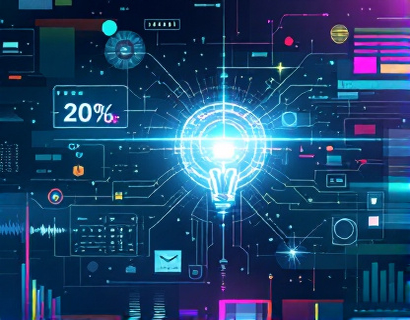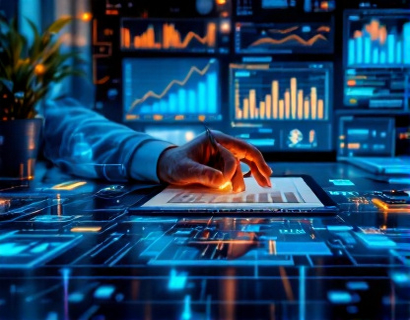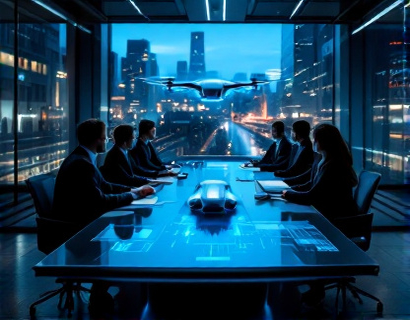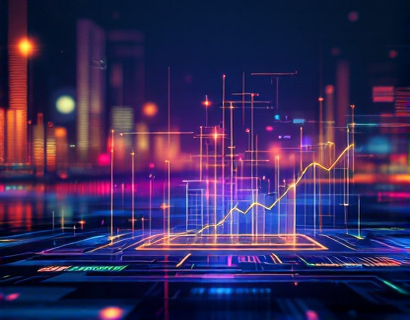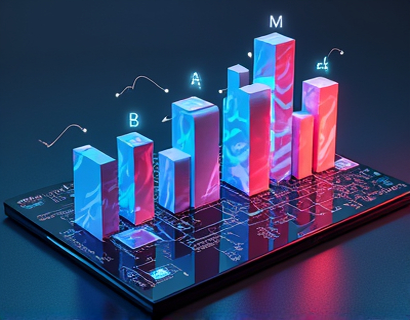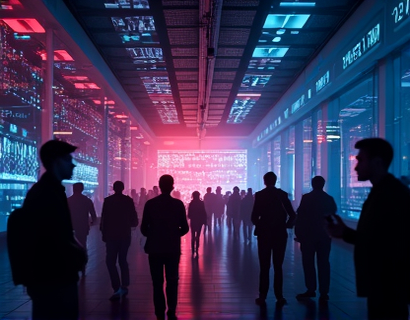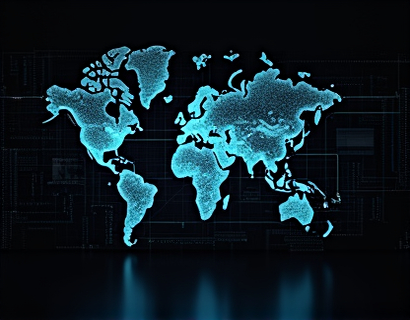Revolutionizing Digital Engagement: The Synergy of Crypto and AI
The intersection of cryptocurrency and artificial intelligence (AI) is giving rise to a new era of digital transformation, where the boundaries of traditional tech are being redefined. This fusion is not just about combining two powerful technologies; it's about creating a synergy that enhances connectivity, drives growth, and elevates user experiences to unprecedented levels. As we delve into this topic, we will explore how the integration of crypto and AI is reshaping the tech landscape, offering insights into the potential of next-generation innovations.
Understanding the Basics: Crypto and AI
To fully appreciate the impact of crypto and AI, it's essential to understand the fundamentals of each. Cryptocurrency, a digital or virtual currency, uses cryptography for security and operates on a decentralized network, typically a blockchain. This decentralized nature ensures transparency, security, and reduces the need for intermediaries. On the other hand, AI refers to the simulation of human intelligence processes by machines, particularly computer systems. These processes include learning (the acquisition of information and rules for using it), reasoning (using rules to reach approximate or definite conclusions), and self-correction.
The Emergence of Crypto and AI Synergy
The convergence of crypto and AI is a relatively recent phenomenon, yet it's rapidly gaining momentum. The unique properties of blockchain technology, such as immutability and transparency, provide an ideal environment for AI algorithms to operate with enhanced trust and efficiency. Conversely, AI's ability to process vast amounts of data and derive meaningful insights can significantly enhance the functionality and security of crypto systems. This mutual reinforcement is paving the way for innovative applications across various sectors.
Enhanced Security through AI-Driven Crypto Solutions
One of the most significant benefits of combining crypto and AI is the enhancement of security measures. Traditional crypto systems rely on complex algorithms and cryptographic techniques to secure transactions. However, as cyber threats evolve, so do the methods to breach these systems. AI introduces a dynamic layer of security by continuously monitoring and analyzing patterns to detect and mitigate potential threats in real-time. Machine learning models can identify anomalies and suspicious activities, adapting to new threats as they emerge. This proactive approach to security not only protects user assets but also builds greater trust in crypto ecosystems.
Smart Contracts and AI: A Powerful Combination
Smart contracts, self-executing contracts with the terms directly written into code, are a cornerstone of blockchain technology. When integrated with AI, smart contracts become even more powerful. AI can analyze complex scenarios and predict outcomes, enabling smart contracts to make more informed and nuanced decisions. For instance, in supply chain management, AI can optimize routes and predict delays, while smart contracts can automatically adjust payments and logistics based on these predictions. This synergy ensures more efficient and reliable processes, reducing human error and increasing operational efficiency.
Personalized User Experiences in Crypto Ecosystems
The integration of AI in crypto ecosystems is revolutionizing how users interact with digital assets. AI-driven analytics can provide personalized recommendations based on user behavior and preferences. For example, a crypto trading platform can use AI to analyze a user's trading history and market trends to suggest optimal buying and selling times. This level of personalization not only enhances user satisfaction but also increases engagement and retention. Moreover, AI-powered chatbots and virtual assistants can offer 24/7 support, answering queries and guiding users through complex processes, thereby improving the overall user experience.
Decentralized Finance (DeFi) and AI: Transforming Financial Services
Decentralized Finance (DeFi) is a rapidly growing sector that leverages blockchain technology to create financial services without traditional intermediaries. AI plays a crucial role in enhancing DeFi platforms by providing advanced risk management, fraud detection, and algorithmic trading. AI algorithms can analyze vast datasets to identify market trends and potential risks, enabling DeFi protocols to make more informed decisions. This not only improves the stability and reliability of DeFi services but also opens up new opportunities for users to access financial products and services in a more democratic and efficient manner.
Crypto and AI in the Internet of Things (IoT)
The Internet of Things (IoT) is another area where the combination of crypto and AI is making significant strides. IoT devices generate enormous amounts of data, which can be overwhelming to process and secure. AI can manage and analyze this data efficiently, while blockchain ensures the integrity and privacy of the data. For instance, in smart cities, AI can optimize traffic flow and energy consumption, while blockchain can securely record and verify transactions between devices. This synergy ensures a seamless and secure IoT experience, enhancing the functionality and reliability of smart systems.
Tokenization and AI: Revolutionizing Asset Management
Tokenization, the process of converting assets into digital tokens on a blockchain, is transforming asset management. When combined with AI, tokenization becomes even more potent. AI can analyze market data and asset performance to optimize token issuance and distribution. For example, AI-driven models can predict the demand for certain tokens, helping issuers to time the release of tokens for maximum impact. Additionally, AI can automate the management of tokenized assets, providing real-time insights and recommendations to investors, thereby simplifying the investment process and increasing accessibility.
Challenges and Considerations
While the potential of crypto and AI synergy is vast, there are several challenges that need to be addressed. Regulatory uncertainties remain a significant hurdle, as governments worldwide are still grappling with how to regulate these emerging technologies. Ensuring compliance while fostering innovation is a delicate balance. Additionally, the technical complexity of integrating AI with crypto systems requires skilled professionals and robust infrastructure. There is also the issue of scalability, as current blockchain networks may struggle to handle the increased computational demands of AI processes. Addressing these challenges is crucial for the sustainable growth of crypto and AI-driven solutions.
Future Prospects: The Next Frontier
Looking ahead, the future of crypto and AI is promising. As technology advances, we can expect more sophisticated and seamless integrations. Quantum computing, for instance, has the potential to revolutionize both crypto and AI by providing unprecedented computational power. This could lead to more advanced AI models and faster, more secure crypto transactions. Moreover, the development of interoperable blockchain platforms will enable better collaboration and integration between different crypto and AI systems, fostering a more connected and efficient digital ecosystem.
Conclusion
The fusion of cryptocurrency and artificial intelligence is not just a technological trend but a transformative force reshaping the digital world. By enhancing security, personalizing user experiences, and optimizing processes, this synergy is driving growth and innovation across various sectors. As we continue to explore and harness the potential of crypto and AI, we can expect a future where digital interactions are more secure, efficient, and engaging. The next-generation innovations in this space will undoubtedly set a new standard for digital experiences, making the tech landscape more dynamic and user-centric.









